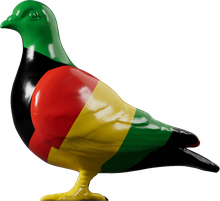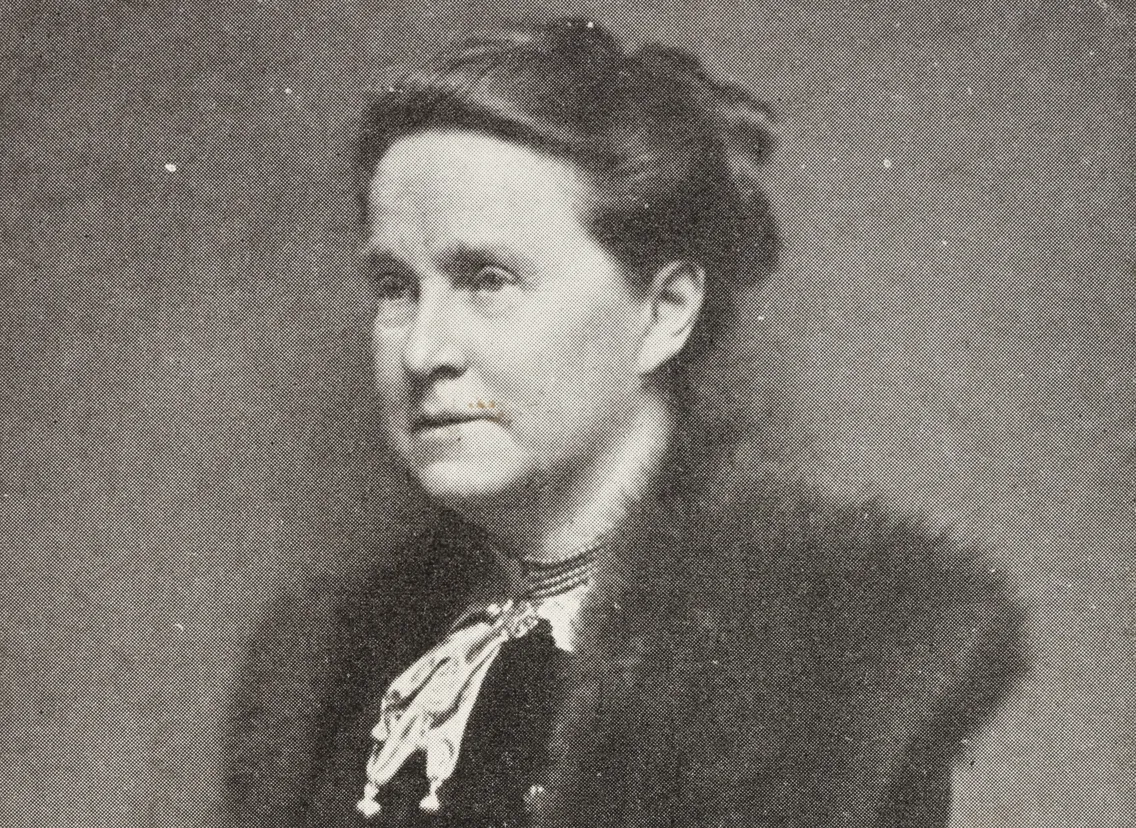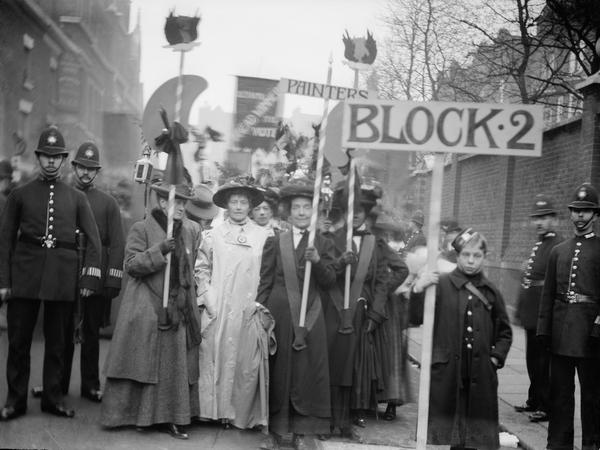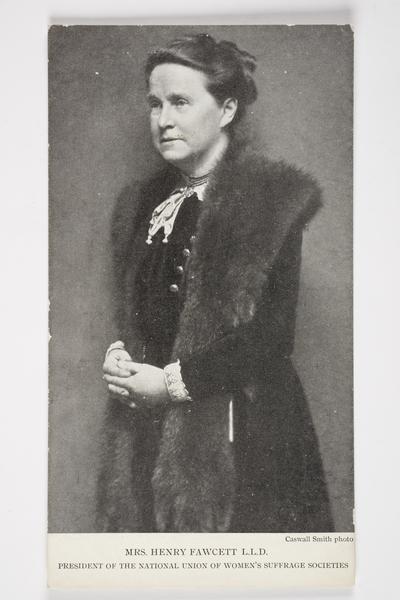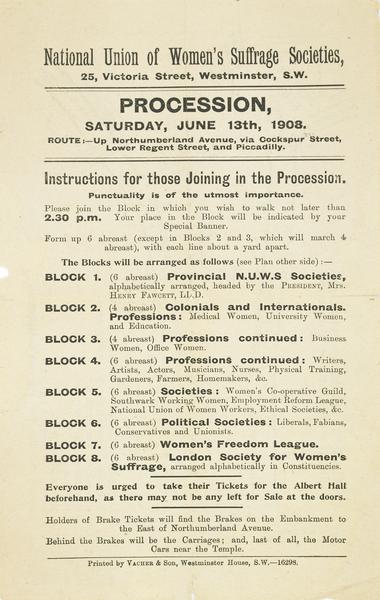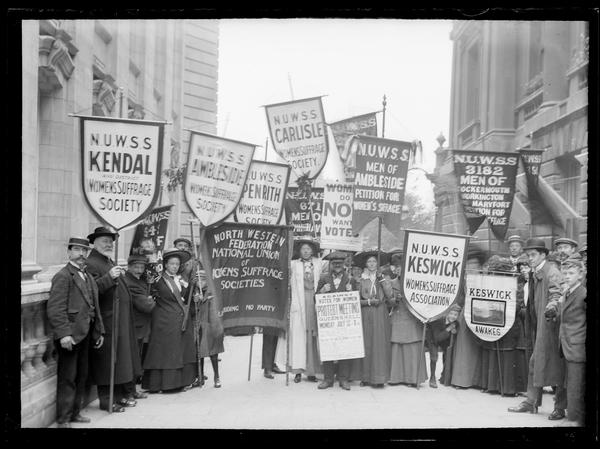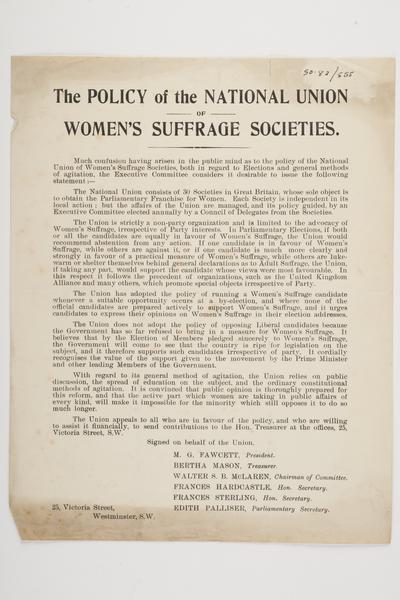Millicent Fawcett: Suffragist, not Suffragette
As leader of the National Union of Women’s Suffrage Societies (NUWSS), Millicent Fawcett used law-abiding tactics to demand that women have a vote.
1847–1929
Leading legally
As leader of the National Union of Women’s Suffrage Societies (NUWSS), Millicent Fawcett used law-abiding tactics to demand that women have a vote.
Between 1906 and 1914 the Suffragettes grabbed all the headlines. They broke windows and started fires to demand women’s suffrage – the right to vote.
But many women and men didn’t believe in breaking the law for the cause. These were the suffragists. Their campaign started 50 years earlier, and they were equally important.
Millicent Fawcett was right at the heart of it. She spent her life campaigning peacefully for equal rights, and led the NUWSS for over 10 years.
She was still NUWSS President in 1918, when women voted for the first time.
Early life and marriage
Fawcett was born in Suffolk in 1847, and went to school in Blackheath, south-east London.
Her parents supported their daughters’ career ambitions. The eldest daughter, Elizabeth Garrett Anderson, became the first British woman to qualify as a doctor.
Aged 19, Millicent married Henry Fawcett. Henry was blind, and Millicent assisted him when he became a Liberal MP, first for Brighton, and later for Hackney in east London.

Millicent Fawcett and her husband Henry.
Starting as a suffragist
Fawcett followed her sisters’ interest in politics, and took inspiration from encounters with pioneering feminist Emily Davies and Liberal MP John Stuart Mill.
In 1867, aged 19, Fawcett organised signatures for the first petition to government asking for votes for women, despite being too young to sign the petition herself.
In 1875, she co-founded Newnham College, Cambridge – one of the first colleges for women – as part of her efforts to improve women's access to higher education.
“Courage calls to courage everywhere”
Millicent Fawcett
What did Millicent Fawcett do?
Fawcett was a committed campaigner, attending marches, speaking publicly and writing books and pamphlets.
In 1897 the influential National Union of Women’s Suffrage Societies (NUWSS) was formed, bringing together 17 separate suffrage groups. Fawcett was elected as its president in 1907, and led the organisation until 1919.
Marching in numbers
Photographs in our collection taken by the pioneering press photographer Christina Broom show some of the events organised by the NUWSS.
In 1908 a procession was organised to show Prime Minister Herbert Asquith that there was mass support for women’s suffrage. In Broom’s photos you can see huge banners the women held. Some celebrated famous women from history, including Joan of Arc, Boudica, Queen Victoria and George Eliot.
The difference between Suffragettes and suffragists

The Suffragette leaders Emmeline and Christabel Pankhurst in replica prison outfits.
From the late 19th century, women organised a more sustained campaign to win the vote, realising they could not rely on men to give them their democratic right.
Law-abiding suffragists like Millicent Fawcett lobbied parliament, marched peacefully, organised petitions and held public meetings.
This contrasted with the Suffragettes, led by Emmeline and Christabel Pankhurst, who believed that only radical action would force politicians to change the law.
The Suffragettes’ 1906–1914 campaign began with marches too, but escalated to window-smashing, starting fires and attempts to storm parliament. Many went to prison.

New Zealand, Australia, Finland and Norway all had equal voting rights for men and women in 1913.
The vote, finally
In 1918, over 8 million women over the age of 30 were allowed to vote in a general election for the first time.
After the 1918 election, Fawcett retired as president of the NUWSS, aged 71. But she continued to campaign.
It took until 1928 for the same voting rules to apply equally to British men and women – when every man and woman over 21 was finally given the vote.
Fawcett died after a short illness a year later, aged 82.
The Millicent Fawcett statue
Today, a statue of Fawcett by the artist Gillian Wearing stands in London’s Parliament Square. The statue faces Parliament, holding a banner showing Fawcett’s inspiring quote: “Courage calls to courage everywhere”.
Fawcett’s life wasn’t only focused on women’s suffrage. Among many other things, she pushed for greater access to education for women and campaigned against the use of child labour.

